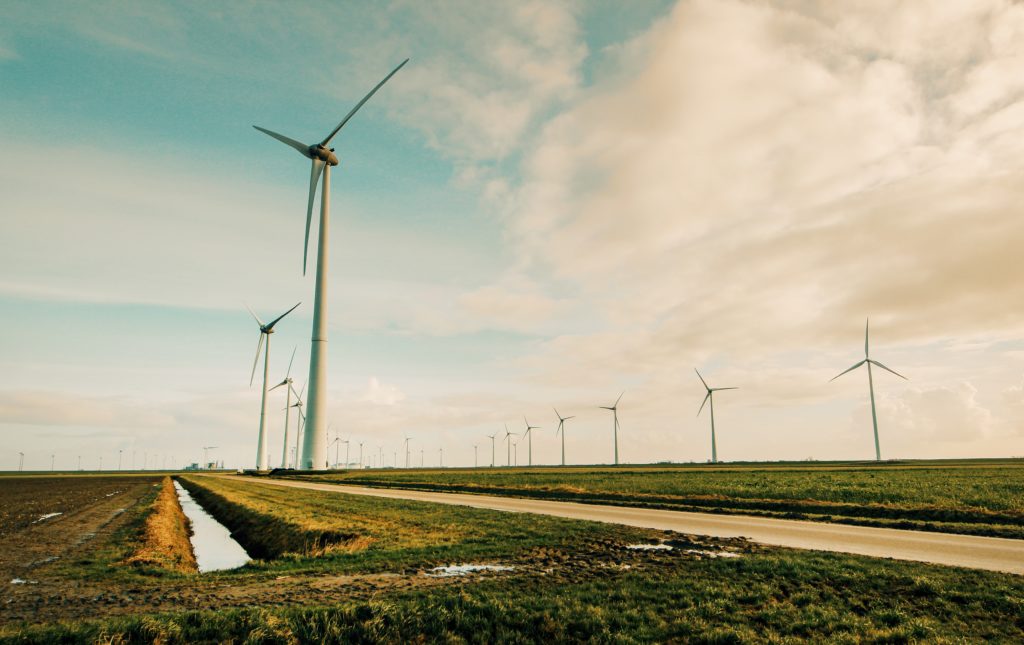Climate Education
This Week on Earth: Factory farms and pandemics
June 12, 2020
Good morning, and welcome back to This Week on Earth. Each week, we highlight the latest environmental news and what it means for our planet.
The world entered its third week of protests for racial justice. The U.S. pushed several more environmental rollbacks, adding to the list of regulations changed during the pandemic. And despite coronavirus lockdowns, global CO2 levels hit record highs.
Check out our week in review.
All meat carries coronavirus potential
Wet markets in China, where COVID-19 very likely originated, were widely criticized for their poorly regulated practices and mistreatment of wildlife.
But experts warn against finger pointing, especially because of how humans around the world consume meat: Factory farms, which supply 90 percent of meat globally, create favorable conditions for pandemics, keeping animals tightly packed under unsanitary conditions.
“When we overcrowd animals by the thousands, in cramped football-field-size sheds, to lie beak to beak or snout to snout, and there’s stress crippling their immune systems, and there’s ammonia from the decomposing waste burning their lungs, and there’s a lack of fresh air and sunlight — put all these factors together and you have a perfect-storm environment for the emergence and spread of disease,“ Michael Greger, author of Bird Flu: A Virus of Our Own Hatching, told Vox.
Amazon burns as public worries over coronavirus
In 2019, deforestation in the Amazon reached levels not seen in over a decade. Now, with Brazil crippled by coronavirus, illegal loggers, miners and land grabbers are clearing forests with little enforcement.
And this lack of enforcement may be intentional. A video released in late May showed the Brazilian Environment Minister calling for environmental deregulation while the public worries about the pandemic. An estimated 464 square miles of Amazon tree cover disappeared between January and April, a 55 percent increase from the same period last year, reports the New York Times.

UN report: Invest in renewable energy
In what’s becoming a weekly theme of green recovery, the United Nations released a report this week that urges governments to invest in renewable energy. The investment would pay off by both jumpstarting the economy and battling the climate crisis.
Unfortunately, countries have been falling behind on these investments and are on pace to miss their marks set by the 2015 Paris Agreement, reports Earther.
Though the cost to invest in renewables sounds high, it actually isn’t. Another report this week shows that the U.S., the world’s second-largest greenhouse gas emitter, can transition to 90% renewable energy by 2035 at little to no extra cost. More about that in Popular Science.
“I can’t breathe”: Protests call for racial reckoning in environmental movement
For the last three weeks, many have been connecting racial justice to climate justice. But raising these issues has traditionally been difficult for black communities within the environmental movement, despite being most at risk from climate change, most exposed to all kinds of pollution and most likely to bear the financial burden of natural disasters.
“There are so many people who care about justice and care about climate change, but they still don’t get it — they still don’t see the connection,” Ayana Elizabeth Johnson, a marine biologist and founder and CEO of Ocean Collectiv, told NBC News. “It’s not like the climate community has a problem with wild racists and horrible people. These are the good ones, and they’re still not quite there.”
Pandemic litter
The coronavirus has increased the use of single-use face masks and latex gloves (both of which look a lot like jellyfish). Now, conservationists worry about the buildup of personal protective equipment (PPE) plastic in oceans and waterways.
These items add to the litter — straws, bags, bottles — already harming marine wildlife. Without curbing this PPE pollution at the source, we may be in for an even more polluted seabed, with grave environmental consequences.
“We’re constantly getting [dolphins and porpoises] washing up dead and we’re just waiting for a necropsy when we find a mask inside,” Joffrey Peltier of the French non-profit Opération Mer Propre told The Guardian. “I think it’s inevitable.”

Why’s voting by mail so controversial?
Voting by mail and absentee voting have been around since the Civil War. Currently all 50 states allow at least a portion of their population to vote by mail, though only 46 are offering this option to all voters in the pandemic.
So, why is voting by mail controversial? Some politicians, mostly republican, are against expansion of the practice — citing reasons like substantially higher voting fraud (false), as well as more idealistic concerns, like states’ rights.
Without voting by mail measures in place, though, what just happened in Georgia’s primaries — where lines lasted hours and voting machines faltered — could expand across the country come November.
NPR dives into everything you need to know about voting by mail.
New Jersey becomes first U.S. state to roll out climate education
This week, New Jersey became the first state in the U.S. to incorporate climate change into its K–12 curriculum. Being a coastal state, New Jersey is particularly affected by climate-fueled problems, including algal blooms, sea level rise and super storms.
“This generation of students will feel the effects of climate change more than any other, and it is critical that every student is provided an opportunity to study and understand the climate crisis through a comprehensive, interdisciplinary lens,” said New Jersey First Lady Tammy Murphy, in a statement.
2x the number of green turtles
Now, for some good news: Drone footage showed 64,000 green sea turtles — a vulnerable species in Queensland — waiting to come ashore and lay eggs on Raine Island, near the Great Barrier Reef. This is almost twice as many as previously believed, according to Andrew Dunstan at the Australian Department of Environment and Science.
“We were underestimating that a lot,” Dunstan told CNN, adding that the team can now go back and adjust historic population estimates. “We’re finding 1.73 times as many turtles with the drone and as we do when we directly compare with the observer counts.”
See the amazing video at the Guardian.
